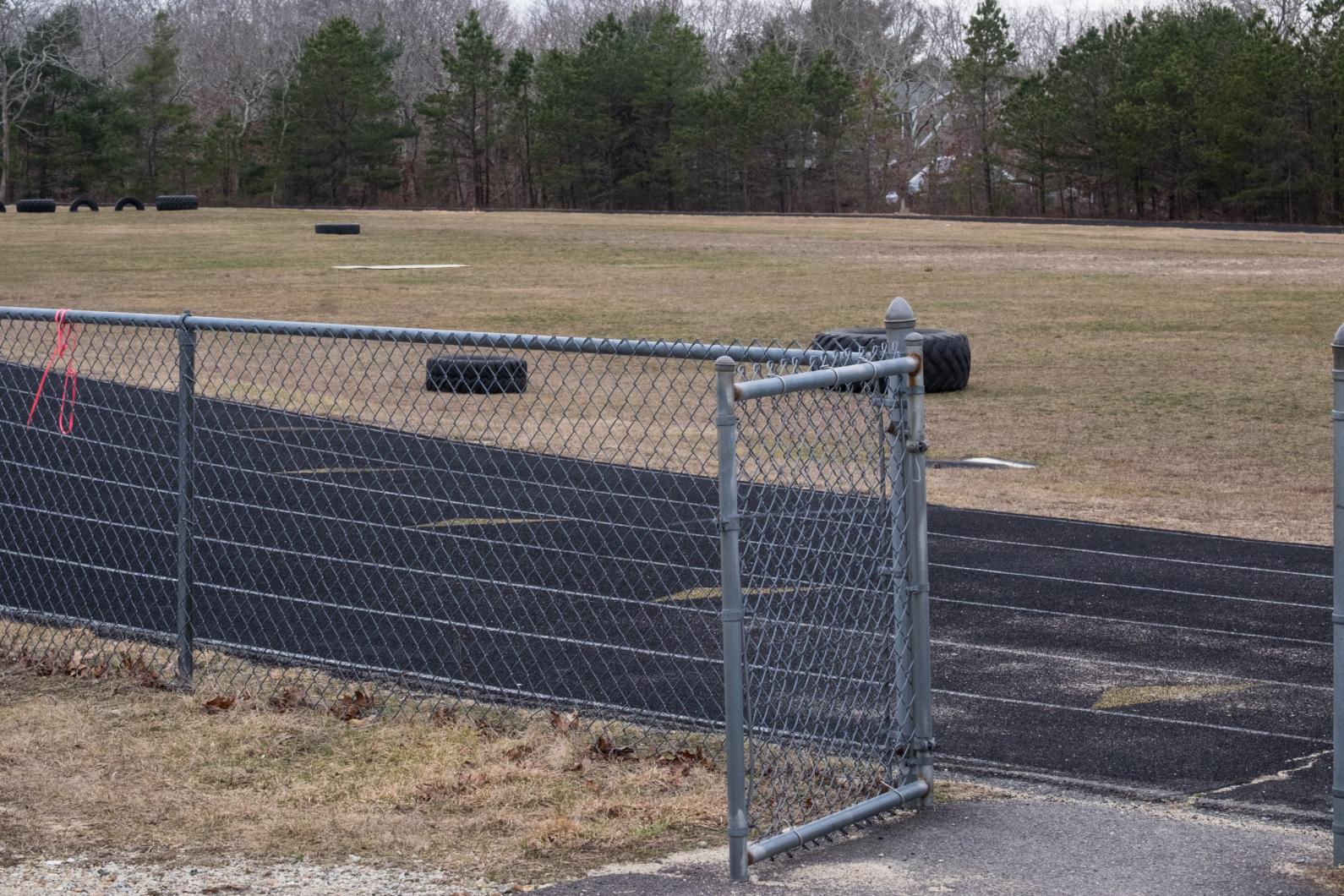The Martha’s Vineyard Commission has begun laying the groundwork for a highly anticipated public hearing this spring to review plans for an artificial turf field and other facilities at the regional high school.
The commission is reviewing the project as a development of regional impact (DRI). The commission’s land use planning subcommittee (LUPC) met Monday to begin the process that typically takes place prior to a hearing. The meeting was relocated from the Old Stone Building in Oak Bluffs to a larger meeting room in the town library, where at least 40 people, including advocates and opponents of artificial turf, quietly observed the proceedings.
No public testimony is allowed at LUPC meetings, essentially working sessions where commissioners review plans for completeness, sometimes advising applicants about the process and what types of questions might be expected.
A public hearing on the plan is tentatively set to open on April 6 at the high school.
The applicant is the Martha’s Vineyard Regional High School, which has signed a license agreement with the community group MV@Play, which is funding and developing the project. Gale Associates of Weymouth is the designer.
A large amount of material has accumulated on the MVC website since last year when the Chilmark and West Tisbury selectmen separately referred the project for review as a DRI. The commission has received a large volume of letters — about 100 to date — on both sides of the project.
Commissioners this week had questions about some of the details, including the location of proposed bleachers and lights and the height of a perimeter fence . There were also questions about how the project fits into longer-term plans for an Islandwide athletic facility at the high school, and how an artificial field will affect traffic and use throughout the year.
The latest plans call for a new running track surrounding a 90,000-square-foot synthetic field, with separate areas for javelin, shotput, high jump, long jump and discus. Plans also show the location but not the overall appearance of athletic lights, a 500-seat bleacher system and other facilities.
Concerns have focused largely on the safety of artificial turf, long-term costs and an apparent conflict of values in light of the Island’s rural character.
Commissioners advised the applicant to provide more detail about the composition of the proposed organic infill for the artificial field, and the plastic turf itself. “That level of detail could be really useful in terms of everyone understanding what’s going on,” commissioner Christina Brown said. They also asked for information about the experience of other schools that have installed artificial fields, and the cost of maintenance.
MV@Play hopes to establish an endowment fund for future maintenance, including the required replacement of the playing surface every 10 to 13 years (estimated to cost $500,000), although the agreement with the high school does not hold it accountable for those costs.
Sean Murphy, an attorney representing MV@Play and the high school committee, said Monday that maintenance costs would likely be included in the school budget, although he also noted the desire to set up an endowment.
Shaw Industries, which produces the proposed Geofill material (made mostly from coconut husks and sand), offers an eight-year warranty with its fields. Commissioner Gail Barmakian asked for a copy of the warranty, and whether it would depend on proper maintenance. Commissioners discussed the possibility of visiting similar fields in the area. Mr. Murphy said the closest one was in Watertown.
Much discussion focused on the possibility of increased use, and how user fees would enter the picture. Mr. Murphy said the new field would ease the burden on the existing grass fields, but he argued that it would not lead to an overall increase in use at the high school.
Ms. Barmakian disagreed. “Part of the reason you want synthetic turf is because you can use it more,” she said, suggesting that the total number of users will go up. “You may not have that exact number, but we’re going to need to figure that out,” she said.
In a letter to the commission, high school athletic director Mark McCarthy said the high school would have first priority in using the new facilities. He added that Island youth teams would likely use the new field in the summer, but that overall use at the high school would not increase, since those teams use other fields as well.
Commissioner Fred Hancock said increased lighting would allow for evening games in the summer, leading to potential parking issues if other events at the high school were scheduled at the same time. Mr. Murphy said it’s up to the high school to plan for multiple events, and he asked to waive a traffic study. But commissioners agreed to seek more information. The land use planning committee will meet again in the coming weeks to determine if a traffic study is necessary.
Other questions focused on how the project relates to other nearby projects, including renovations to the Martha’s Vineyard Ice Arena across the way, and how it could affect Lagoon Pond to the north, since it lies within the watershed. Commissioner Clarence A. (Trip) Barnes 3rd asked the high school to conduct a poll of its 675 students to see where they stand on the proposal.
Mr. Murphy said the public hearing will include a full presentation with a representative from Gale Associates in attendance. He said the presentation would include information about product safety and what happens to an artificial field after decommissioning.






Comments (9)
Comments
Comment policy »